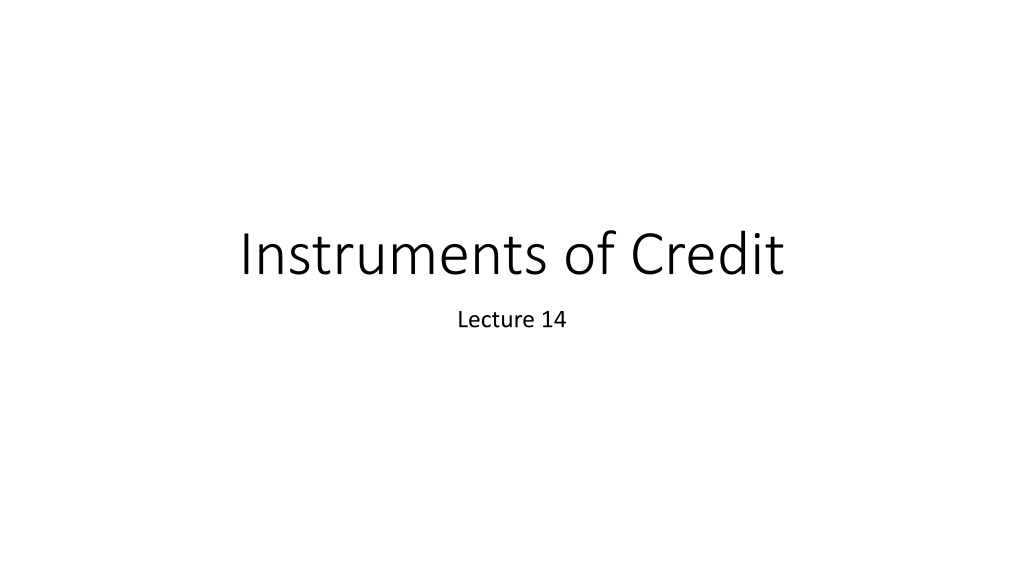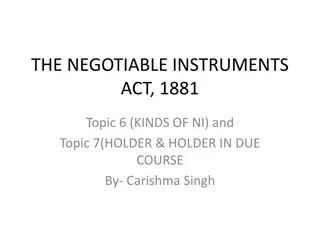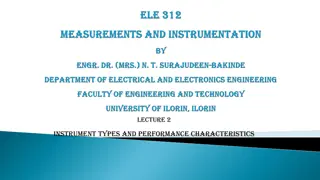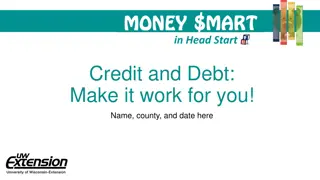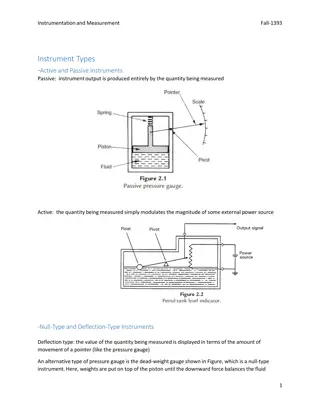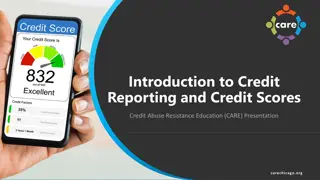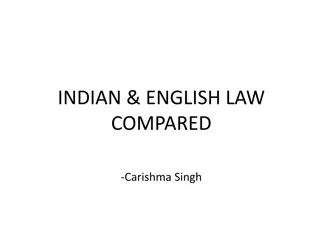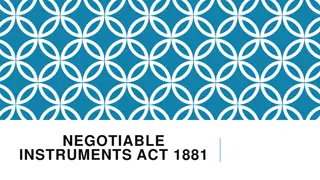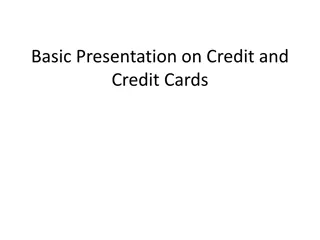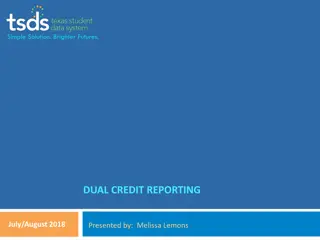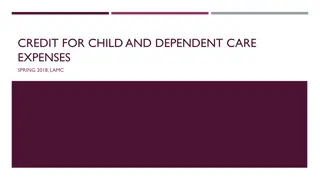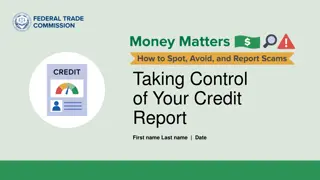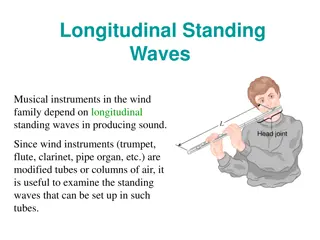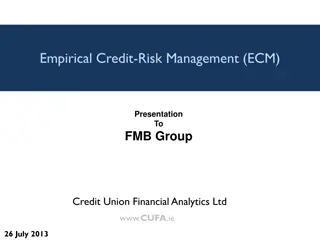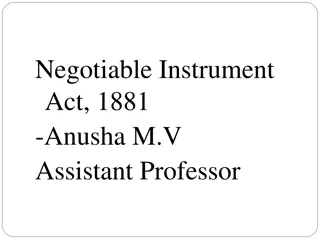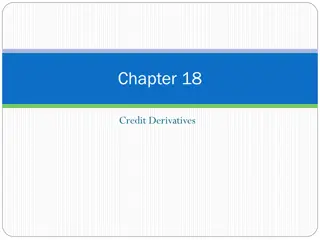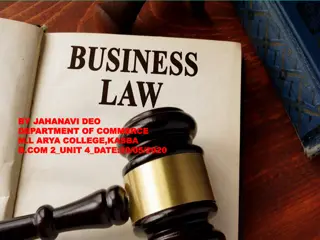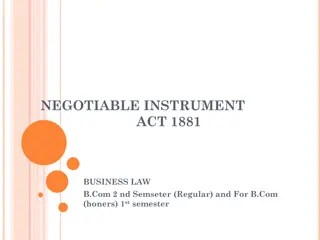Understanding Credit Instruments and Negotiable Instruments
Credit instruments play a crucial role in modern business by facilitating the transfer of money between lenders and borrowers. These instruments, such as Payroll Credit, Book Credit, and Documentary Credit, come in various forms like oral agreements and written documents. Negotiable instruments, on the other hand, promise payment to the assignee and are transferable documents that entitle the holder to receive money. Characteristics and types of negotiable instruments, including Promissory Notes, are also explored in this informative content.
Download Presentation

Please find below an Image/Link to download the presentation.
The content on the website is provided AS IS for your information and personal use only. It may not be sold, licensed, or shared on other websites without obtaining consent from the author. Download presentation by click this link. If you encounter any issues during the download, it is possible that the publisher has removed the file from their server.
E N D
Presentation Transcript
Instruments of Credit Lecture 14
Credit Instruments Credit instruments are financial securities through which we extend credit to individuals and businesses Credit play dominant role in the modern business by transferring money to the borrowers and subsequently back to the lender There are many ways through which we can extend the credit, some are in written and others are in unwritten from Credit is classified under three heads, Pay roll credit, Book credit, and Documented credit instrument
Credit Instruments 1. Pay roll Credit: Also called oral agreement, it is a credit extended without written agreement with borrower. This type of credit is extended to individuals, friends and businesses. If the borrower refuse to pay credit the lender cannot prove the existent of obligation 2. Open Book Accounts or Book Credit: This type of account are usually open with businesses where account payable entries are made on the daily, weekly, monthly basis. The amount may become bad debts 3. Documentary Credit Instrument: all condition on credit is in written form on particular paper, like interest rate, number of year, payment place, etc. examples are Promissory note, Bill of exchange, cheque
What is Negotiable instrument? Negotiable instruments are documents which promise payment to the assignee (the person whom it is assigned to/given to) or a specified person. These instruments are transferable signed documents which promises to pay the bearer/holder the sum of money when demanded or at any time in the future. As mentioned above, these instruments are transferable. The final holder takes the funds and can use them as per his requirements.
Characteristics of Negotiable Instrument 1. Transferable by delivery: it is transferable from one person to another by delivery or endorsement 2. Entitled to receive Money: the legal holder of the instrument is entitled to receive money mentioned in it 3. Filling a suit: the holder of negotiable instrument has the right to file a suit for payment from maker
Types of Negotiable Instruments Types of Negotiable Instruments 1. Promissory Note A promissory note refers to a written promise to its holder by an entity or an individual to pay a certain sum of money by a pre- decided date. In other words, Promissory notes show the amount which someone owes to you or you owe to someone together with the interest rate and also the date of payment.
Example of Promissory Note For example, A purchases from B AFN 10,000 worth of goods. In case A is not able to pay for the purchases in cash, or doesn t want to do so, he could give B a promissory note. It is A s promise to pay B either on a specified date or on demand. In another possibility, A might have a promissory note which is issued by C. He could endorse this note and give it to B and clear of his dues this way. However, the seller isn t bound to accept the promissory note. The reputation of a buyer is of great importance to a seller in deciding whether to accept the promissory note or not
Essential Features of Promissory Note 1. Promise must be in written form 2. The promise to may must be signed by maker 3. The promise to pay must be unconditional 4. The amount to be paid must be in definite term of money 5. Must be payable on demand or at a specific future date 6. It must bear stamp at the rate prescribed by law of the country 7. There are two parties in a promissory note I. Maker: person who draw and sign PN II. Payee: person to whom the amount of PN is payable
